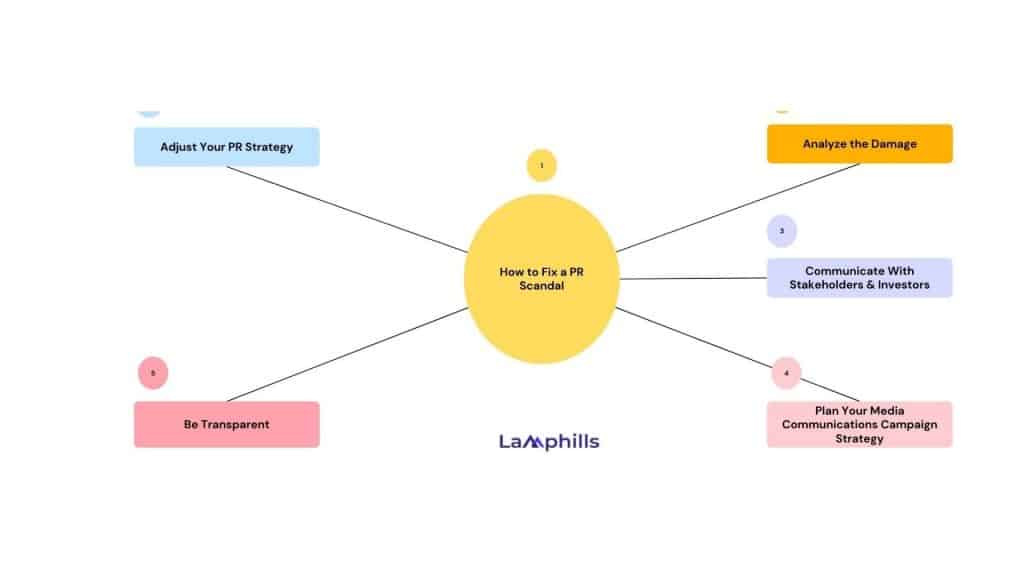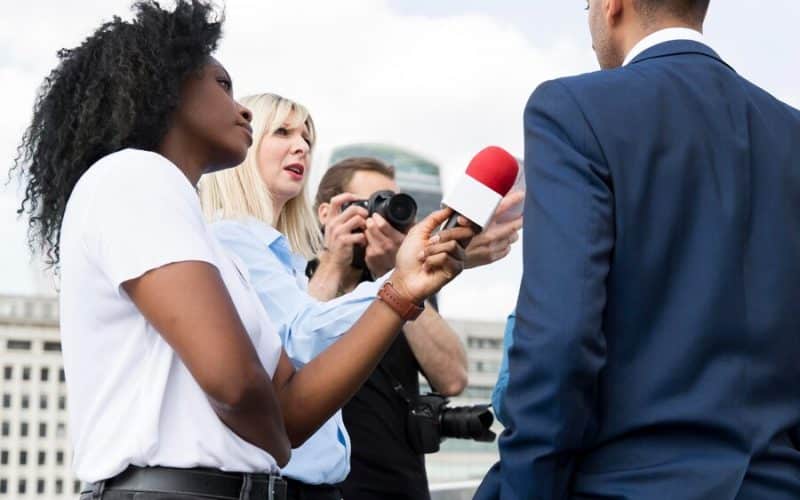PR scandals occur when a company’s intended or unintended acts attract negative public reactions. The consequences include damage to reputation, a loss of customer trust, legal issues, and financial penalties. Countless crisis events have left a lasting impression on public opinion on a brand’s identity, whether for a few days or even years. Understanding the anatomy of PR scandals might reveal significant insights into reputation management.
In today’s social media, PR scandals echo over the internet, making recovery even more difficult than avoiding negative publicity. Exploring these cases provides insights toward regaining composure and keeping situations from getting out of control.
Key Takeaways
- A PR scandal is defined as an event or action that damages the reputation of an individual, company, or organization, resulting in negative publicity, a loss of confidence, and potential financial implications. It is stressed that PR scandals can have long-term consequences on public opinion and must be managed strategically.
- The content discusses several popular PR scandals, ranging from corporate cover-ups to celebrity mistakes. Each case study is supported by personal experiences and lessons learned, providing practical insights for PR professionals.
- Communication is a two-way street. Listen to your stakeholders and address their concerns. Social media can be an effective tool for both positive and bad communication, so plan to manage your online presence.
- The content concludes with actionable steps for mitigating and recovering from PR crises. It emphasizes the importance of analyzing the damage, communicating with stakeholders, and being transparent in crisis management efforts.
What is a PR Scandal?
A PR scandal is any event or action that tarnishes the reputation of an individual, company, or organization. It’s the stuff of nightmares for PR professionals, as it can result in widespread negative publicity, a loss of trust, and financial consequences.
According to a PR News survey, 87% of consumers believe they would quit purchasing from a company following a PR scandal. Another Edelman survey revealed that trust in businesses has reduced in recent years, with 56% of respondents stating they trust companies less than they did five years ago.
Assume you’re part of a PR team for a major corporation. One day, you wake up to find your client involved in a scandal involving unethical business practices. Panic sets in as you scramble to contain the fallout and salvage what’s left of the company’s reputation.
I recall a similar event from my time with a PR firm. Our client, a well-known retailer, faced backlash after it was exposed that they used sweatshop labor in their overseas factories. It was a race against the clock to prepare press releases, coordinate media responses, and reassure stakeholders.
Top 10 PR Scandals in History
Let us now dig into the records of PR history to uncover some of the most well-known scandals of all time. From corporate cover-ups to celebrity meltdowns, these examples serve as warning signs for PR professionals around the world. (Disclaimer: This list is based entirely on my own research and what keeps me awake at night.)
#1. Hindenburg Disaster (1937)
Let us start with a classic. The Hindenburg, a large German airship, was designed to represent the peak of luxury travel. But in 1937, everything went tragically wrong. The airship caught fire as it attempted to land, killing 36 passengers.
As someone who gets nervous on small airplanes, this one hits close to home. The lack of transparency surrounding the cause of the disaster only fueled public fear and distrust of air travel.
Lesson Learned: Honesty is always the best policy, even in the face of tragedy.
#2. New Coke Fiasco (1985)
Coca-Cola, the king of sugary beverages, decided to experiment with its age-old formula in 1985. They introduced “New Coke,” a sweeter version. As a self-proclaimed cola aficionado (don’t judge!), this hit me hard. The public dismay was quick and furious. People revolted! This is an excellent example of how loyal clients can become your most vocal supporters (or critics). Coca-Cola later reintroduced the original recipe, proving that change isn’t always good.
#3. BP oil spill (2010)
This one requires no introduction. In 2010, a major oil rig explosion in the Gulf of Mexico resulted in an unusual environmental disaster. BP, the company involved, was heavily criticized for its delayed response and lack of transparency.
According to an NPR article from 2010, estimations suggested the spill could cost BP a staggering $20 billion. This scandal highlighted the importance of corporate responsibility and environmental stewardship. It also showed us the devastating impact such disasters can have on marine life and coastal communities.
#4. Volkswagen Emissions Scandal (2015)
Volkswagen, a German car manufacturer noted for its reliability, was caught red-handed in 2015. They had placed software in their cars that deceived emissions testing, making them appear cleaner than they were. This one made me feel deceived. Volkswagen was a reputable brand, and this lie broke consumer trust. The corporation faced significant fines and lawsuits, and its reputation suffered greatly.
#5. Kendall Jenner’s Pepsi Ad (2017)
Remember that Pepsi ad featuring Kendall Jenner joining a protest and resolving the situation with a can of soda? Yeah, that one. The ad received widespread criticism for trivializing the Black Lives Matter movement. As someone who cares about social justice, the ad seemed like a slap in the face. It demonstrated a complete lack of knowledge of the gravity of the situation. Pepsi quickly pulled the ad and apologized, but the damage was done.
#6. Fyre Festival Fiasco (2017)
This social media-fueled festival promised an extravagant weekend on a private island with luxury accommodations and celebrity appearances. Reality? Soggy tents, meager food rations, and a complete lack of organization. Having planned countless events myself, this one gave event planners a bad name. The whole ordeal became a viral meme, and the festival’s organizer, Billy McFarland, faced jail time for fraud.
Lesson Learned: Don’t oversell what you can’t deliver, especially when it comes to social media hype.
#7. Equifax Data Breach (2017)
Equifax, a credit reporting agency, experienced a massive data breach in 2017, exposing the sensitive information of millions of Americans. Having your Social Security number leaked is a major security concern. The company’s slow response and lack of clear communication only added to the public’s outrage. Equifax faced hefty fines and lawsuits, and its reputation as a trusted data steward was shattered.
#8. Uber’s Self-Driving Car Crash (2018)
Uber, a pioneer in the ride-sharing market, was developing self-driving cars. In 2018, one of their self-driving cars hit and killed a pedestrian. The event prompted severe concerns about the safety of self-driving vehicles. According to National Highway Traffic Safety Administration (NHTSA) research published in 2022, there were over 390 self-driving car crashes between 2016 and 2021. This incident underlined the importance of thorough testing and safety procedures before self-driving cars are widely adopted.
#9. Boeing 737 Max Grounding (2019)
The Boeing 737 Max was supposed to be a game-changer in the aviation industry. However, two fatal crashes in 2018 and 2019 revealed a design flaw in the plane’s flight control system. Boeing faced intense scrutiny for prioritizing profits over safety. Having flown countless times, this one shook my confidence in air travel. The grounding of the 737 Max planes caused major disruptions for airlines and passengers worldwide.
#10. Cambridge Analytica and Facebook Data Scandal (2018)
This scandal exposed the dark side of social media. Cambridge Analytica, a political consulting firm, obtained the personal data of millions of Facebook users without their knowledge or consent. The data was then allegedly used to target voters with political ads during the 2016 US presidential election.
As someone who values online privacy, this scandal was deeply unsettling. It raised serious concerns about how our data is collected, used, and potentially weaponized.
#11. Braden Wallake, the crying CEO
When HyperSocial CEO Braden Wallake took to social media with “the most vulnerable thing I’ll ever share,” no one expected a teary-eyed video of him crying following layoffs. And it appears that few people desired it.
While the actual number of people he had to lay off was not revealed, the video received criticism from some who felt it was self-absorbed and “cringe-worthy”. Some people found the display of emotion for a decision that affected others to be unacceptable. While Wallake claims he has no regrets about the video, it backfired and resulted in more mockery than anything else, which was probably not the look he intended. Be warned: think before sharing.
#12. Wells Fargo account fraud scandal
Wells Fargo employees created phony accounts to meet sales quotas. The end effect was that Wells Fargo initially experienced operational challenges, and when the scandal was discovered, the company’s reputation was on thin ice.
The original response was to blame low-level individuals rather than assume full accountability as a firm. As the crisis unfolded and it became clear how many accounts were affected, leadership accepted responsibility. The CEO resigned and top management was replaced.
For the scale of the crisis, Wells Fargo’s leadership was too slow to accept responsibility. Aside from the reputational damage, the company had to pay more than $3 billion to regulatory bodies.
Reflecting on these monumental PR scandals, it’s clear that no organization or individual is immune to scandal. Each case presents unique challenges and requires swift, strategic action to mitigate damage and rebuild trust.
During my time working with a nonprofit PR agency, we faced backlash over allegations of misusing donor funds. It was a devastating blow to our credibility, but through transparent communication and proactive measures, we regained our supporters’ trust over time.
How to Fix PR Scandals?

I’ve identified some of the most important steps a firm can take to fix and recover from PR scandals.
#1. Analyze the damage
If your company has been the victim of a PR scandal, the first thing you should do is assess the damage. Take a step back and honestly assess the damage to your company’s reputation. To do so, first determine whether there is a negative public attitude of the company or its stakeholders, employees, and customers. This should be done using digital metrics from your social media channels, online reviews, and benchmarked search results.
#2. Communicate with stakeholders & investors
After reviewing all of the data, the next step would be to put out the word about the impact of the crisis. The most crucial people to talk to first are your company’s stakeholders. This typically comprises investors and business partners.
Start by discussing what events led to the crisis and what efforts are being taken to put an end to it. Next, discuss what future actions will be implemented to ensure that this precise situation never happens again.
#3. Plan your media communications campaign strategy
After informing your shareholders, the next step is to shape public opinion. This step of the process can be considered the pinnacle of all crisis management strategies, as it will ultimately determine the effectiveness of all your efforts.
First, you must use the media by carefully selecting brand leaders to make a public statement. If your company is at fault, you will need to take ownership of all the mistakes you have made. By failing to address who is to blame or deflecting blame to a third party, you could blacken your company’s reputation even more.
#4. Be transparent
Whether your organization is at fault or not, it is critical to be forthcoming. People could believe that your company was aware of the problem all along if you simply apologized after being caught in the crossfire. This can render any apology you offer deceptive and ineffective. It can also offer the public reason to believe that you might deceive your customers again. In essence, this is precisely what you don’t want.
#5. Adjust your PR strategy
Finally, you should take responsibility online. Although social media can contribute to a PR scandal, you can prevent it from happening by taking control of all your communication platforms. Ensure that your online team is well-prepared to monitor and manage interactions on social media platforms, blog commentary sections, Google review sections, and other online platforms.
What is an Example of a Bad PR?
Pepsi has lived through plenty of bad PR examples. Remember the big failure of the 1989 commercial that featured Madonna and her controversial “Like a Prayer” song? A couple of years ago, the scapegoat of the Pepsi ad was supermodel Kendall Jenner.
What is a PR Debacle?
A PR debacle is a major public relations disaster characterized by a significant negative impact on an individual, organization, or company’s reputation, often resulting from mishandled situations, controversial actions, or communication failures. It’s a situation where the public perception of the entity involved is severely damaged, leading to widespread criticism, loss of trust, and sometimes financial repercussions.
Conclusion
Remember, PR scandals don’t have to be the end of the story. With careful communication, damage control, and a genuine commitment to doing better, you can rebuild trust and emerge stronger than ever. But the question remains, what’s the biggest PR scandal YOU’ve ever witnessed? Share your thoughts in the comments below!
Related Articles
- Top Media Outlets in 2024: A Trustworthy Guide for Authoritative News Sources
- PR Team: Meaning, What They Do & How to Grow One 2024
- PR Strategy: The Most Effective Strategies in 2024 (+ Expert Tips)
- How To Do PR Like A Pro (Expert Tips & Detailed Guide)






